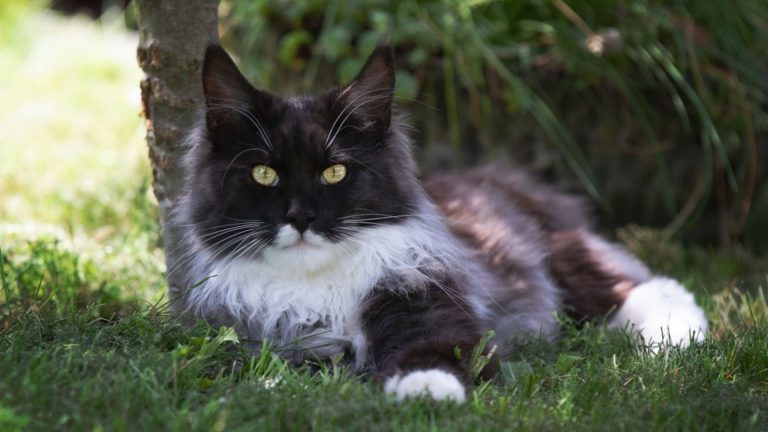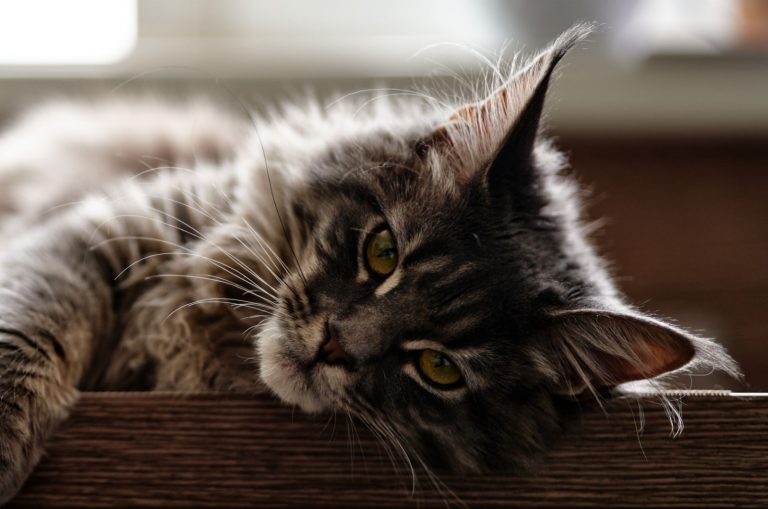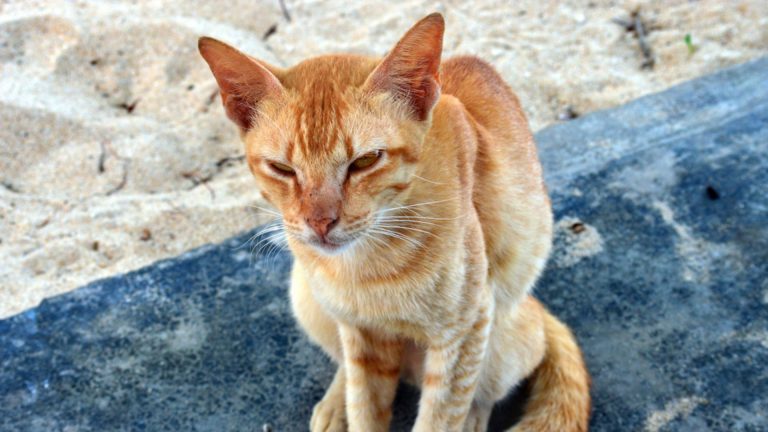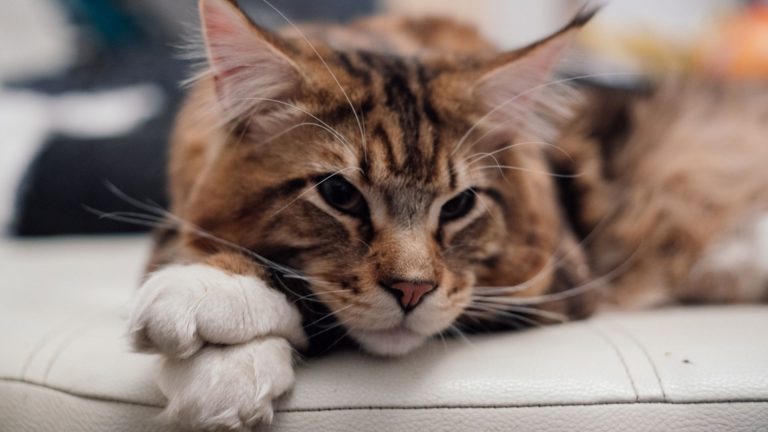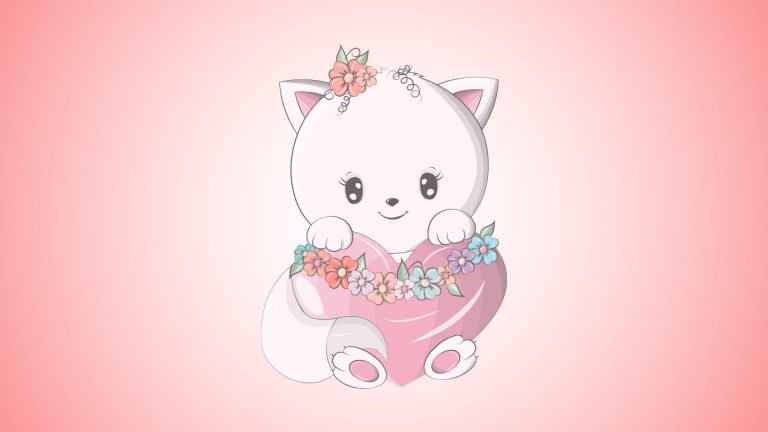What’s A Primordial Pouch? 3 Purposes Of A Cat’s Belly Flap

You must have noticed that some cats have a cute belly pouch on their undersides, towards their hind legs.
Every cat has a belly flap, a so-called primordial pouch. However, it’s interesting that it’s easily observable in some cats while others show no sign of it.
Most pet owners need to become more familiar with the purpose of a cat’s primordial pouch, so I’m here to give you all the necessary information!
I will cover what a primordial pouch is, why some cats have it clearly displayed and others do not, and how to differentiate between a primordial pouch and a chubby tummy.
What’s A Primordial Pouch?
The primordial pouch is a belly flap composed of a small amount of fatty tissue and loose skin.
Cat owners often call this layer of skin belly flaps, tum-tums, or snack packs; however, they’re technically named primordial pouches.
Every time the cat moves, the pouch might sway left to right or bounce a little. When you touch it, it has a soft, almost jelly-like texture.
Many cat owners say the primordial pouch resembles the extra skin cats have on their necks, known as the “scruff,” where mother cats pick up their young using their teeth!
If you’re not quite sure what a primordial pouch looks like, check out this video in which you can see two adorable kitties. They both have a visible primordial pouch but it’s more noticeable in the calico cat (the one on the right).
Some cats have more prominent pouches, which I will go into more detail about later in this article; however, it’s interesting that even non-domestic big cats have them, such as lions and tigers!
Do All Cats Have A Primordial Pouch?
Yes, all cats have a primordial pouch, regardless of sex, age, or whether the cat is a purebred or mixed breed cat, a house cat, or a stray cat!
Not all cats have a clearly visible primordial pouch, and the pouch size depends mainly on a cat’s breed and weight.
Cats begin to develop this sagging layer of skin during kittenhood, typically around six months old. However, primordial pouches usually become more evident in adulthood.
The primordial pouch plays a significant role in feline physiology, which I’ll explain now!
3 Purposes Of A Primordial Pouch
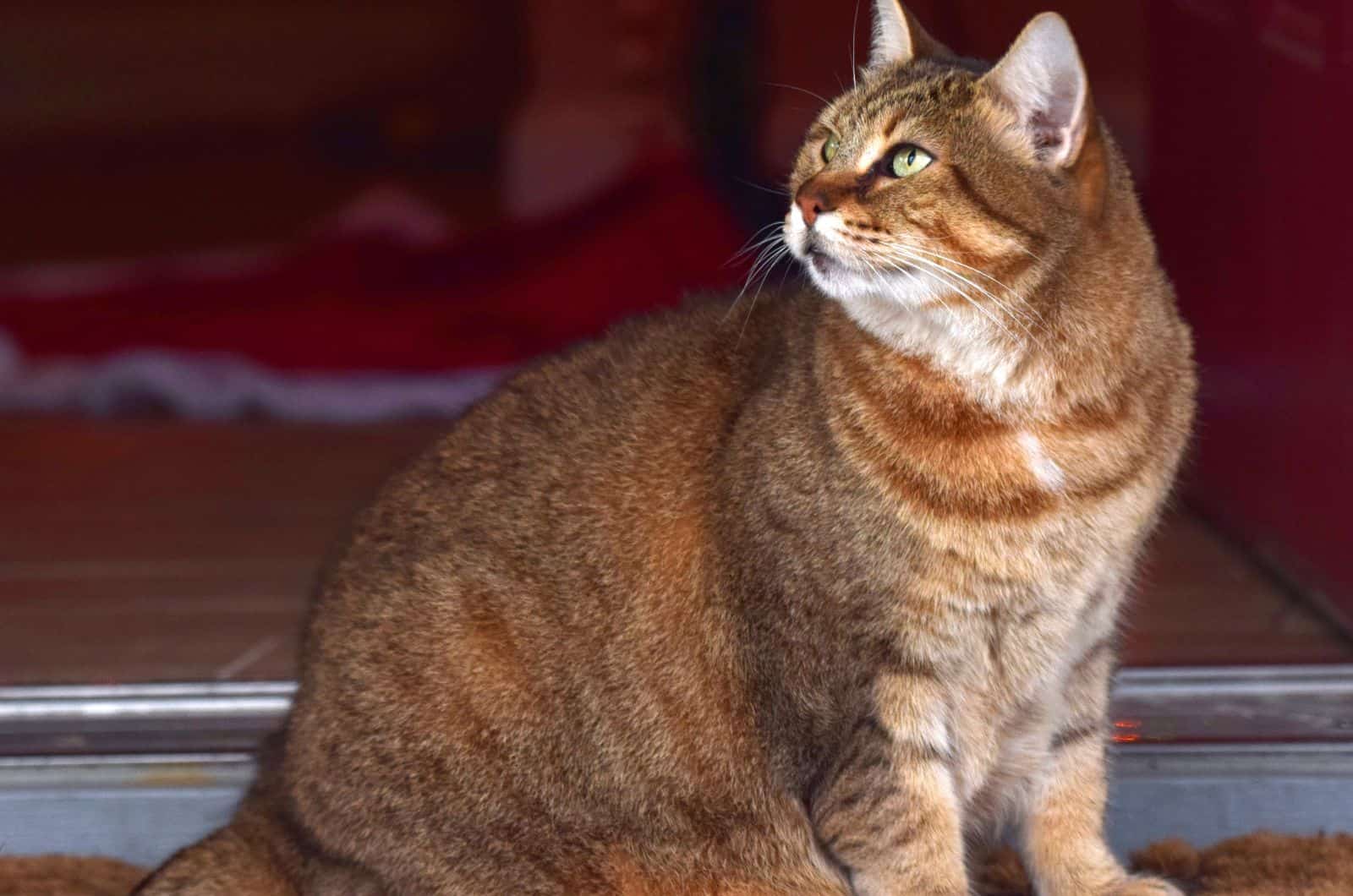
You might be wondering why do cats have a primordial pouch in the first place?!
Although a cat’s belly pouch might look silly, it has a few important functions!
1. It Protects The Internal Organs
According to Cumberland Veterinary Clinic, the primordial pouch is beneficial in protecting a cat’s abdomen.
When cats fight, you might have noticed that they frequently use their hind legs and pointed claws to kick one another. During a cat fight, a cat can get hurt, and if another cat’s kick lands on the cat’s underside, it could potentially damage the recipient cat’s vital organs.
The loose skin of the pouch protects your cat’s essential organs, including the liver, stomach, and spleen.
2. It Allows Freedom Of Movement
The loose skin is handy when a cat wants to run or jump, as it provides freedom of movement, and allows the cat to stretch out as much as possible.
Cats can twist and jump into the air because their muscular hind legs can be extended. And the belly flap allows that extension.
Imagine if a cat did not have that potion of loose skin – its range of motion would be greatly limited by the lack of extra skin.
This is best observed when a cat jumps high in the air – you can notice the extra skin is no longer sagging, but it’s tight as it allows the cat to stretch out as much as possible.
3. It Allows Abdomen Expansion
The elasticity of the primordial pouch also allows a cat’s abdomen to expand for food storage.
According to this theory, many wild cats overeat after a kill since they never know where their next meal will come from. Theoretically, the excess skin allows the abdomen to expand after a cat has had a lot of food.
Many people disagree with this theory, though.
The pouch isn’t actually a pouch, to start with. It is a pocket of space but not a storage area. Wild cats don’t store additional meat in their primordial pouches for later digestion.
Many hunting animals lack primordial pouches. For instance, a wolf can go two weeks without eating before chowing down on a fourth of his body weight in meat. Wolves also lack primordial pouches, which makes the theory about cats having primordial pouches for food storage questionable.
Some Cat Breeds Have More Noticeable Primordial Pouches

This belly flap can be noticeable or barely noticeable, depending on a cat’s breed, size, and genetic makeup.
Because the sleek Sphynx lacks fur to hide it, the pouch is more noticeable than it would be on, say, a Maine Coon. However, the cat’s genetic predisposition to having a visible primordial pouch plays a more vital role than the cat’s fur length.
Cat breeds most likely to have a prominent primordial pouch include:
1. Pixie Bob
The Pixiebob is one of the breeds praised for having a belly flap, as the belly flap is easily noticeable in these kitties. You’re probably more familiar with these cats due to their interesting short tails.
Apart from their unique appearance, these cats have amazing personalities. They’re very intelligent, social, and playful. They are people-oriented and get along with kids and other pets very nicely. They’re the perfect family pet, if you ask me.
2. Bengal
If you look into the Bengal cat breed profile, you will notice their primordial pouch is mentioned!
The domestic Bengal cat was developed by mating domestic cats with Asian leopard cats (a small wild cat). The Bengal’s distinctive ancestry is shown in its tiger-like coat and prominent primordial pouch.
Many consider them a great choice for people with cat allergies, as they’re considered to be hypoallergenic!
3. Egyptian Mau
Egyptian Mau is a medium-sized gray tabby cat and is also one of the rarest cats in the cat world.
They are renowned for their extraordinary speed, as they’re capable of running at speeds of up to 30 mph! Its primordial pouch may contribute to this astounding speed, as it allows for full limb extension.
According to The International Cat Association (TICA) ‘s breed description, Egyptian Maus have loose skin flap (belly flap) as one of their breed characteristics.
The Cat Fanciers’ Association also mentions, in their Egyptian Mau standard, that these cats have “Loose skin flap extending from flank to hind leg knee.”
4. Japanese Bobtail
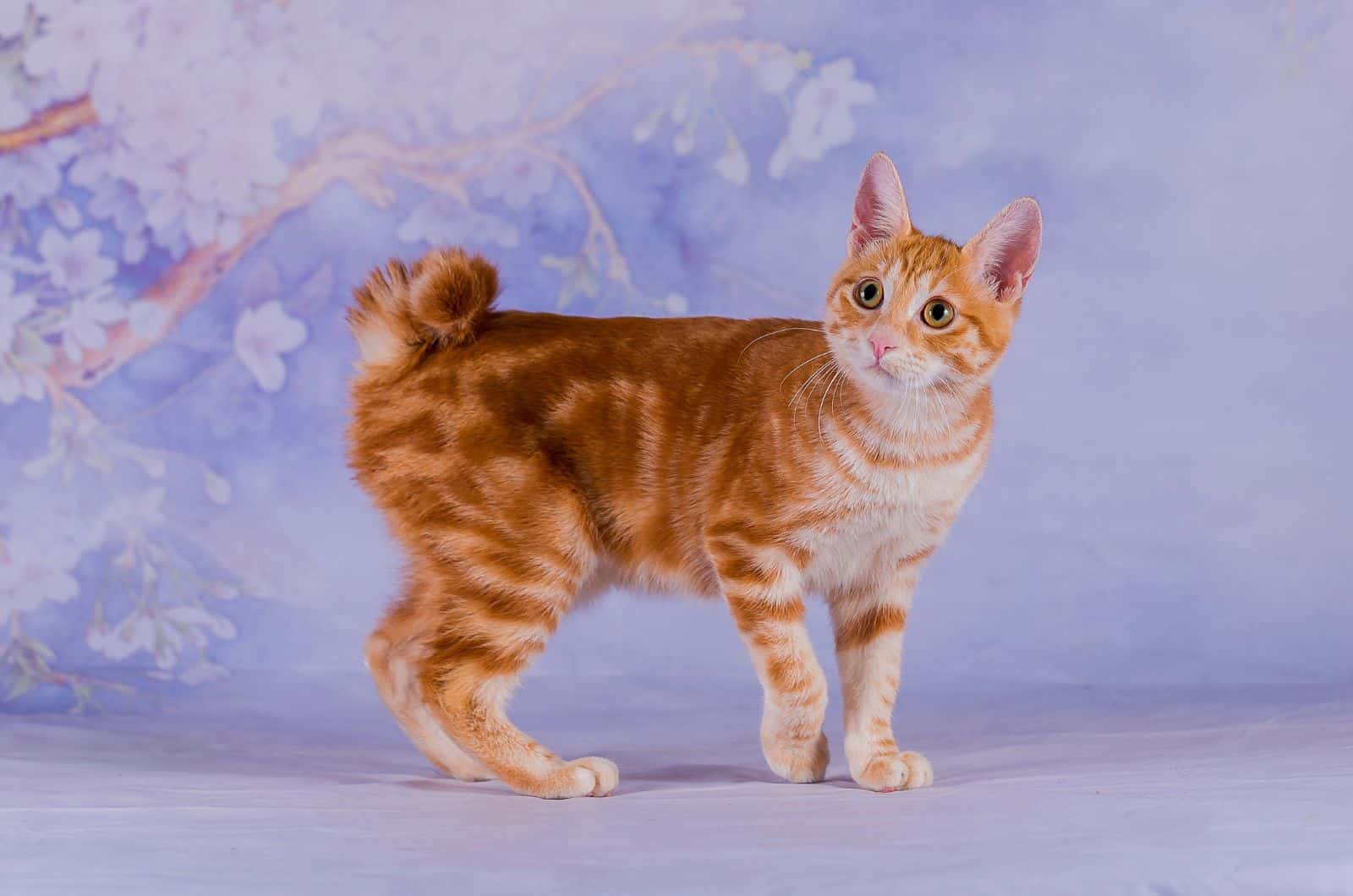
Japanese Bobtail cats are popular bi-colored and tri-colored cats, often remembered due to their “no-tail appearance.” However, they have a tail; it’s just short and stubby!
The cats are also distinguished by their slender bodies, which highlight their primordial pouches!
The Japanese Bobtail is a playful, affectionate, intelligent, and active breed. They enjoy social interaction and engage in endless play; they bring toys to people and spend a lot of time playing fetch with a favorite toy.
5. Thai Cat
Thai cat is a shorthaired cat with an athletic build and, you guessed it, Thailand ancestry. Thai cats have been considered Siamese cats for a very long time, but they’re separate breeds now. The two cat breeds share ancestry, colorpoint coats, and personalities, but they do have their differences.
Apart from having a very interesting historical background, Thai cats also have a visible primordial pouch! If you look into TICA’s 2019 breed standard, you can see that “a slight amount of loose skin on the underbelly below the flank is permissible”.
When it comes to their personality, these lively, inquisitive cats love to participate in conversations and will follow their owners’ every move.
6. Khao Manee Cat
Only a few cat lovers are familiar with the Khao Manee cat, and I admit I only learned about them before writing this article. However, they have a bunch of interesting traits and fun facts!
According to the 2019 TICA breed standard of Khao Manee, you’ll find that “some loose skin on the underbelly is permissible”. Therefore, if you ever see a Khao Manee cat, you may notice its primordial pouch!
They’re famous for their jewel-like eyes, which are often two different colors. They’re also very expensive due to how rare they are.
7. Siberian Cat
Unlike the Khao Manee cat, Siberian cats are not so rare. In fact, they’re a popular choice for people mildly allergic to cats, as they’re considered one of the more hypoallergenic cat breeds out there.
Many cat owners confuse their Siberian cat’s primordial pouch for belly fat that results from gaining weight, but that’s not the case! All cats have primordial pouches, and they’re not a result of weight gain.
Siberian cats are friendly to outsiders and adore their owners. As you go about your day, this obedient and caring cat will follow you and purr in your lap as you brush her fur.
The Primordial Pouch Gets More Noticeable With Age
Although a cat’s genetics play a huge role in whether or not the primordial pouch will be visible, age is also an important factor.
According to Cumberland Veterinary Clinic, primordial pouches are “simply something that becomes more noticeable as your cat gets older and their skin loses elasticity“.
This is completely understandable, as an elderly cat’s skin is thinner and less elastic, meaning the loose skin will be even more visible as the cat ages.
Primordial Pouch Vs. Chubby Cat Tummy

It’s important to note that a primordial pouch is completely different from a weight-gain pouch or pregnancy pouch. If your cat suddenly develops a more prominent hanging belly, it’s likely not a primordial pouch but something else.
Causes Of Chubby Cat Tummy
1. Obesity
If you’re wondering why does my cat have a fat pouch?, you need to think about whether you’ve been giving your cat more food than usual, if your cat has been eating more than usual, been physically inactive, or if it has been neutered or spayed (neutered cats tend to gain some weight).
How Do You Differentiate A Primordial Pouch From A Fat Pouch On Cats?
It’s relatively simple:
• a cat with a healthy weight has a primordial pouch sagging close to the cat’s back legs
• an overweight cat has a saggy, round-shaped tummy over the entire underside
• the ribs of cat with a healthy weight can be felt under a thin layer of fat
• you cannot feel an overweight cat’s ribs as their fat deposits over them
• a cat with a healthy weight has a visible waist indentation when viewed from above
• an overweight cat has no visible waistline but has a rounded belly
Assessing your cat’s body condition using a body condition score is a useful approach to determining the difference between an overweight cat’s belly and a primordial pouch.
During your cat’s annual checkups, your veterinarian will do an evaluation to assist in establishing whether or not your feline friend is overweight.
Related: How Heavy Should My Cat Be: Weight Guide
2. Pregnancy
If you have an unspayed female cat who suddenly develops a round tummy, it’s very likely the cat is pregnant. If your cat was in heat, has mated with a male cat, and now your cat’s stomach has grown, it’s time to start marking your new kitten checklist.
The first sign of feline pregnancy is enlarged, red nipples, while the rounded stomach appears at week five of feline pregnancy. If you’re unsure if your cat is pregnant, a vet trip will solve all your concerns.
However, it’s quite easy to differentiate between a saggy flap of skin under a cat’s belly (primordial pouch) and a pregnant cat’s tummy, so I’m sure you’ll not make the mistake of mixing up your pregnant cat’s tummy for a primordial pouch, and vice versa.
Noticing A Mass Around The Cat’s Belly That Is Not A Primordial Pouch

It’s a good idea to feel for any odd changes, such as lumps or bumps when feeling your cat’s primordial pouch.
If you notice your cat’s abdomen has enlarged in a way, and the enlargement is not due to weight gain or pregnancy, that might be a cause for concern.
A female cat can develop lumps in the abdominal area due to mammary gland cancer. This type of cancer can also happen to male cats; however, that is very rare.
If your cat has cancer, fungal infections, or bacterial infections, the lump may be a swollen lymph node, and your cat will probably exhibit further symptoms of disease.
Your veterinarian should examine the lump as soon as possible.
FAQ
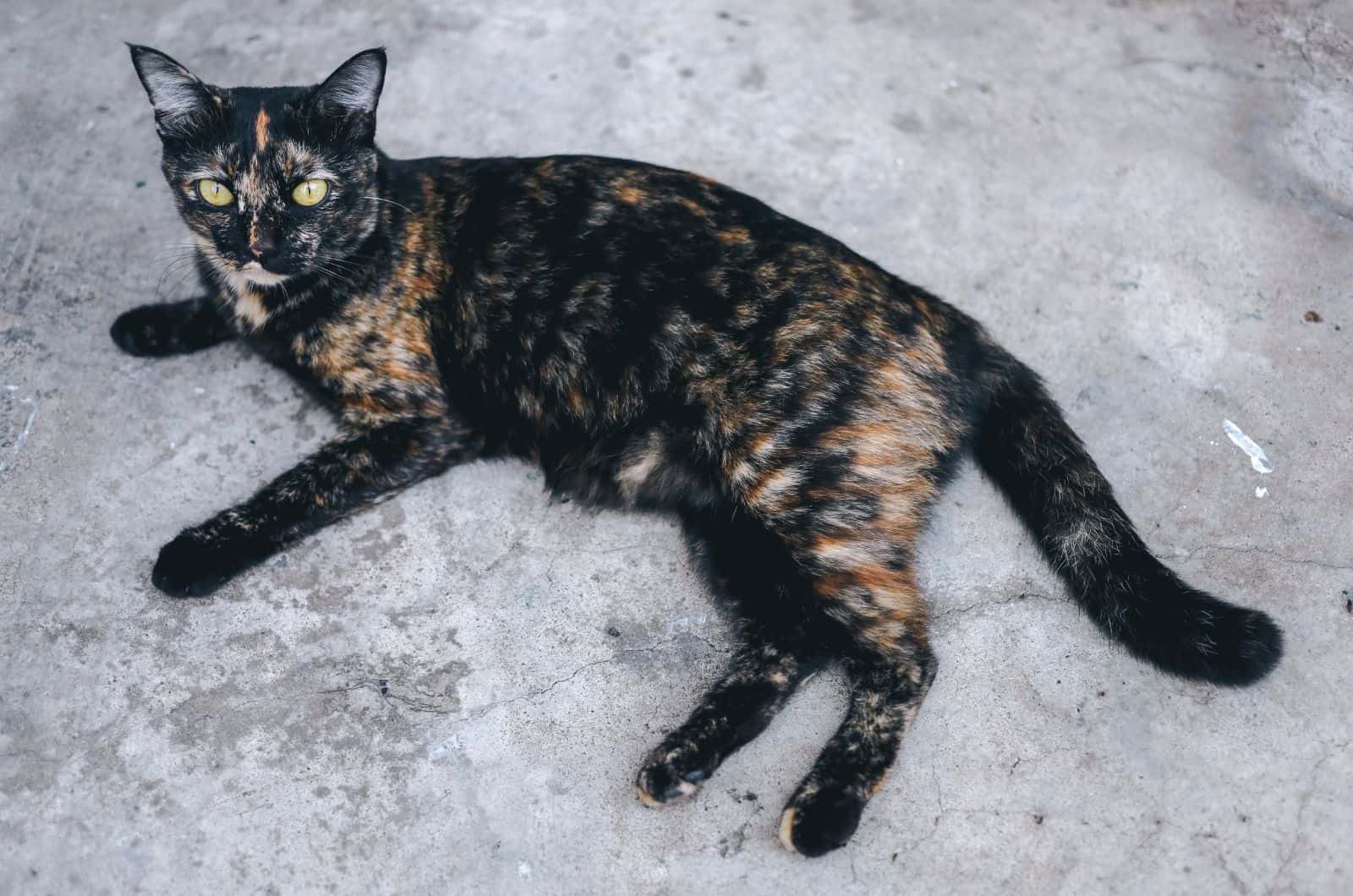
When Do Cats Develop A Primordial Pouch?
Around six months old, kittens start to develop their primordial pouches. These pouches often grow more noticeable as cats age, especially as they approach adulthood.
However, it’s important to note that not all cats have a clearly visible primordial pouch. Some cats are more likely to have a visible pouch (such as the Bengal cat or the Egyptian Mau), while for others, it’s not so easily observable.
What Is A Primordial Pouch Made Of?
A feline primordial pouch is formed from an extra layer of fat, skin, and fur; nothing more. The size of primordial pouches depends on the cat, but it can be said that obese cats contain more fat content in their primordial pouches compared to cats of regular weight.
Why Is It Called A Primordial Pouch?
I have not been able to find the origin of the “primordial pouch” name; however, I did find some clues as to why a cat’s pouch would be called a primordial pouch.
Primordial means “existing from the beginning”, and this pouch forms early in the cat’s development, regardless of whether it’s visible or not. This makes sense, considering cats do not just develop primordial pouches when they gain weight or grow old but rather early on in their kittenhood.
Does A Primordial Pouch Go Away?
No, a cat’s primordial pouch does not “go away”. A primordial pouch is typically formed when the cat (or the kitten) is six months old; from then on, it’s a permanent part of the body.
However, a primordial pouch can become less observable, for example, when a chubby cat loses some weight.
Why Is My Cat’s Primordial Pouch So Saggy?
Some cats have large pouches that are saggy and readily observable, while other cats have pouches that are almost entirely unnoticeable. The size of the pouch depends on the cat’s genetics. However, it can be noted that older cats have saggier pouches due to their skin becoming naturally less elastic as the cat ages.
Does Spaying And Neutering Cause A Primordial Pouch?
When the primordial pouch begins to grow at six months, many cats are also getting spayed or neutered. This explains why many believe that the primordial pouch’s development is influenced by spaying and neutering. However, this is only a coincidence.
The only correlation between neutering and primordial pouches is that neutering sometimes causes weight gain, which can lead to a more prominent primordial pouch.
In Conclusion

Primordial pouches are belly pouches formed in kittenhood and persist through the cat’s life. They’re likely to become more visible as the cat ages; however, some cats have a primordial pouch that’s barely noticeable!
Some cats, such as Pixiebob cats, are praised for their primordial pouches, and cat registries recognize them as something every cat of that breed should have.
The purpose of these pouches is to protect the cat’s internal organs and provide a larger range of motion. Therefore, they’re not only funny flaps of skin but rather serve a very important role!
If you’ve observed that your cat’s belly is drooping more than usual, your initial assumption could be that your cat has put on a little weight.
However, a cat’s hanging belly might also be a sign of other health-related issues; therefore, if you notice an odd enlargement of your cat’s underside, make sure to visit a vet to ensure your cat’s health is okay!
Related Articles:
Jacobson Organ: Cat Biology 101 – Pheromone Detection

